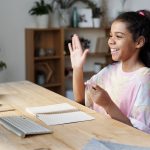Understanding the risks associated with unrestricted access to YouTube
YouTube is a vast platform that offers a wide range of content, including educational videos, music, entertainment, and more. However, unrestricted access to YouTube can expose children to various risks. One of the main concerns is the exposure to inappropriate or harmful content. With millions of videos being uploaded every day, it’s challenging for YouTube’s moderation system to catch all potentially harmful material.
Additionally, unrestricted access means that children may stumble upon disturbing or violent content accidentally. This can have negative psychological effects on young minds and even desensitize them to violence. Moreover, there is also the risk of encountering cyberbullying or predatory behavior from other users in the comments section.
Another significant risk associated with unrestricted access to YouTube is excessive screen time. Spending too much time watching videos on YouTube can lead to sedentary lifestyles and neglecting other important activities such as physical exercise or social interactions. It’s crucial for parents to set limits on their child’s screen time and encourage a healthy balance between online and offline activities.
In conclusion (Oops! I mean), To protect children from these risks associated with unrestricted access to YouTube, it is essential for parents/guardians/teachers/caregivers (choose one) take an active role in monitoring their child’s online activity by implementing parental control settings and utilizing filters/content restrictions available on the platform.
Identifying signs that your child may be exposed to inappropriate content on YouTube
One indication that your child may be exposed to inappropriate content on YouTube is a sudden change in behavior. If you notice your child becoming more secretive, withdrawn, or agitated after using the platform, it could be a sign that they have come across content that is not suitable for their age. They may also exhibit signs of distress or discomfort when discussing certain topics or videos.
Another red flag to watch out for is an increase in explicit language or knowledge beyond what is appropriate for their age. If your child starts using inappropriate words or phrases that they haven’t learned from you or their peers, it might indicate exposure to unsuitable content on YouTube. Additionally, if they display an understanding of mature themes and concepts that are beyond their developmental level, it could suggest that they have been accessing videos intended for older audiences.
Pay attention to any sudden interest in violence, self-harm, sexualized behavior, or dangerous challenges among children who regularly use YouTube. These behaviors can sometimes result from exposure to harmful content on the platform. Keep an eye out for any changes in their preferences regarding the types of videos they watch as well; if there’s a shift towards violent or explicit material despite previously enjoying age-appropriate content, this could signal exposure to inappropriate videos on YouTube.
Remember that these signs alone do not definitively prove exposure to inappropriate content but should serve as warning signals prompting further investigation into your child’s online activities and conversations with them about internet safety.
Exploring the importance of parental control settings on YouTube
Parental control settings on YouTube are a crucial tool for ensuring the safety and well-being of children online. These settings allow parents to have greater control over the content their child can access, helping to filter out inappropriate or harmful videos. By enabling parental controls, parents can create a safer environment for their children to explore and enjoy the vast array of content available on this popular video platform.
One of the key benefits of parental control settings is that they allow parents to set age restrictions for content. This means that videos with explicit language, violence, or adult themes will be filtered out based on the age range selected by the parent. By customizing these settings according to their child’s age and maturity level, parents can ensure that their child is only exposed to appropriate and educational content while using YouTube.
Another important feature offered by parental control settings is the ability to block specific channels or videos from appearing in search results or recommendations. This is particularly useful if there are certain channels or creators whose content you find unsuitable for your child. By blocking these channels, you can prevent your child from stumbling upon inappropriate material while browsing through YouTube.
By taking advantage of parental control settings on YouTube, parents can provide a safer online experience for their children. These tools offer peace of mind by allowing parents to customize what their child sees and accesses on this widely used video platform. It’s important for parents to familiarize themselves with these features and make use of them as part of responsible digital parenting practices.
Step-by-step guide on how to block a YouTube channel
To block a YouTube channel and prevent your child from accessing its content, follow these simple steps. First, open the YouTube app or website on your device. Then, navigate to the channel page of the specific channel you want to block.
Once you are on the channel page, look for the “About” section below the profile picture and click on it. In this section, locate and click on the flag icon labeled “Report user.” A drop-down menu will appear with several options; select “Block user” from this list.
After clicking on “Block user,” a confirmation message will pop up asking if you are sure about blocking the channel. Confirm your decision by clicking “OK.” The blocked channel will no longer be accessible to your child when they use their account or any other device associated with it.
Blocking a YouTube channel can help ensure that your child is not exposed to inappropriate content or potentially harmful influences. By following these steps, you can take an active role in protecting their online experience and promoting a safer digital environment for them.
Utilizing filters and content restrictions to enhance child safety on YouTube
One effective way to enhance child safety on YouTube is by utilizing filters and content restrictions. These features allow parents to have more control over the types of videos their children can access. By setting up filters based on age appropriateness or specific categories, parents can ensure that their children are only exposed to content that aligns with their values and interests.
In addition to filters, content restrictions also play a crucial role in enhancing child safety on YouTube. Parents can choose to restrict certain types of content such as violence, explicit language, or mature themes. This helps create a safer browsing experience for children and reduces the risk of them stumbling upon inappropriate videos accidentally.
By taking advantage of these filtering and restriction options, parents can provide a safer environment for their children while using YouTube. It is important for parents to familiarize themselves with these settings and regularly update them as needed to adapt to changing circumstances or new concerns that may arise regarding online safety for children.
Exploring alternative video platforms for children with curated content
One alternative video platform for children with curated content is Kidoodle.TV. This platform offers a wide range of child-friendly shows and videos that have been carefully selected to ensure age-appropriate content. Parents can also set up individual profiles for each child, allowing them to customize the viewing experience based on their interests and developmental stage.
Another option is PBS Kids Video, which provides access to educational programs from the Public Broadcasting Service (PBS). This platform features popular shows like Sesame Street, Arthur, and Curious George, all of which are designed to entertain while promoting learning and positive values. With its emphasis on educational content, parents can feel confident that their children are engaging with enriching material.
A third alternative worth considering is Hopster. This app offers a variety of interactive games, videos, and activities that are both entertaining and educational. It includes popular characters such as Peppa Pig and Thomas & Friends, providing familiar faces for young viewers. Additionally, Hopster allows parents to track their child’s progress through various learning milestones.
By exploring these alternative video platforms with curated content specifically designed for children, parents can provide a safer digital environment while still offering entertainment options tailored to their child’s age group and interests.
Discussing the role of open communication in protecting your child from inappropriate content
Open communication plays a crucial role in protecting your child from exposure to inappropriate content on YouTube. By fostering an environment where your child feels comfortable discussing their online experiences with you, you can gain valuable insight into their activities and address any concerns promptly. Encourage open dialogue about the types of videos they watch, the channels they follow, and any encounters with questionable content.
Through regular conversations, you can educate your child about the potential risks associated with unrestricted access to YouTube. Discuss topics such as cyberbullying, harmful or violent content, and the importance of being cautious when interacting with strangers online. Emphasize that they should immediately report anything that makes them uncomfortable or raises red flags.
Additionally, open communication allows you to set clear expectations and establish boundaries regarding YouTube usage. Explain why certain types of content are not suitable for their age group and reinforce the importance of adhering to parental control settings and restrictions. By involving your child in these discussions and decision-making processes, you empower them to make responsible choices while using digital media platforms like YouTube without feeling overly restricted.
By maintaining ongoing conversations about internet safety and appropriate online behavior, parents can create a supportive environment that encourages children to seek guidance when faced with potentially harmful situations on YouTube or other digital platforms. This open line of communication enables parents to proactively protect their children from inappropriate content while also building trust between parent and child in navigating the vast world of online media safely.
Understanding the potential consequences of not monitoring your child’s YouTube activity
Without monitoring your child’s YouTube activity, you are leaving them vulnerable to a wide range of potential consequences. One of the most concerning risks is exposure to inappropriate content. With unrestricted access, children can stumble upon videos that contain violence, explicit language, or other adult themes that are not suitable for their age group. This exposure can have a negative impact on their emotional well-being and development.
Furthermore, without monitoring, your child may also become susceptible to online predators and cyberbullying. YouTube provides a platform for individuals with malicious intentions to target young users through comments or direct messages. By not keeping an eye on their activity, you may be unaware of any harmful interactions they may be experiencing online.
Another consequence of unmonitored YouTube usage is excessive screen time and its associated effects on physical health and academic performance. Spending hours watching videos can lead to sedentary behavior and neglecting other important activities such as exercise or homework. Additionally, it can disrupt sleep patterns and hinder concentration during school hours.
It is crucial for parents to take an active role in monitoring their child’s YouTube activity in order to protect them from these potential consequences. By implementing parental control settings, setting limitations on screen time, and regularly discussing internet safety with your child, you can create a safer digital environment for them to explore while minimizing the risks associated with unrestricted access to YouTube.
Addressing common concerns and misconceptions about blocking YouTube channels
Blocking YouTube channels can be a controversial topic, with some parents expressing concerns about limiting their child’s access to content. However, it is important to address common concerns and misconceptions surrounding this issue. One common misconception is that blocking YouTube channels will prevent children from accessing educational or informative content. While it is true that there are many valuable resources on YouTube, it is essential for parents to understand that not all content on the platform is suitable for children.
Another concern raised by parents is the fear of restricting their child’s freedom and independence. It is important to remember that implementing parental controls and blocking certain channels does not mean completely cutting off access to online platforms. Instead, it allows parents to create a safe environment where children can explore appropriate content without being exposed to harmful or age-inappropriate material.
Some may argue that monitoring and blocking YouTube channels infringes upon a child’s privacy. However, as responsible caregivers, it falls upon us to ensure our children’s safety in both the physical and digital worlds. Just as we set boundaries in other aspects of their lives, such as what they watch on television or which websites they visit, monitoring their online activities helps protect them from potential harm.
By addressing these concerns and misconceptions surrounding the blocking of YouTube channels, we can help parents make informed decisions regarding their child’s online safety. It is crucial for caregivers to understand that implementing restrictions does not mean depriving children of opportunities but rather providing them with a secure environment where they can explore age-appropriate content freely while safeguarding against potentially harmful material
Tips for fostering a healthy and responsible approach to digital media consumption in children.
Encouraging a healthy and responsible approach to digital media consumption in children is crucial in today’s technology-driven world. Firstly, it is important for parents to set clear boundaries and establish screen time limits. This can help ensure that children engage in a balanced range of activities, both online and offline. By setting consistent rules around device usage, parents can promote healthier habits and prevent excessive reliance on digital media.
Secondly, fostering open communication with your child about their digital experiences is essential. Encourage them to share what they are watching or playing online, as well as any concerns they may have encountered. By creating a safe space for discussion, you can address any potential risks or inappropriate content together. This not only helps protect your child but also allows them to develop critical thinking skills when navigating the vast amount of information available online.
Lastly, leading by example plays a significant role in shaping your child’s behavior towards digital media consumption. Be mindful of your own screen time habits and demonstrate responsible use of technology. Engage in activities that encourage face-to-face interaction with family members and friends while limiting distractions from devices. By modeling healthy behaviors yourself, you provide an invaluable guide for your child on how to strike a balance between the virtual world and real-life experiences.
By following these tips for fostering a healthy approach to digital media consumption in children, parents can help create an environment where their child develops positive habits while staying safe online without feeling overwhelmed or restricted by unnecessary limitations imposed on their access to technology
What are the risks associated with unrestricted access to YouTube?
Unrestricted access to YouTube can expose children to inappropriate content, including violence, explicit language, and explicit imagery. It can also lead to excessive screen time and a lack of critical thinking skills.
How can I identify signs that my child may be exposed to inappropriate content on YouTube?
Look out for sudden changes in behavior, inappropriate language or knowledge beyond their age, and secretive behavior while using devices. These could be signs that your child is being exposed to inappropriate content on YouTube.
Why are parental control settings important on YouTube?
Parental control settings allow parents to restrict access to certain types of content, set time limits, and monitor their child’s activity on YouTube. These settings help parents create a safer and more controlled digital environment for their children.
How can I block a YouTube channel for my child?
You can block a YouTube channel by going to the channel profile page and selecting the “Block user” option. This will prevent any videos from that channel from appearing in your child’s recommendations or search results.
How can filters and content restrictions enhance child safety on YouTube?
Filters and content restrictions can help filter out inappropriate content, limit access to age-appropriate videos, and ensure a safer viewing experience for children on YouTube.
Are there alternative video platforms for children with curated content?
Yes, there are alternative video platforms such as YouTube Kids, which offer curated content specifically designed for children. These platforms provide a safer and more appropriate viewing experience for young viewers.
How does open communication play a role in protecting children from inappropriate content on YouTube?
Open communication between parents and children allows for discussions about safe internet usage, responsible media consumption, and the potential risks associated with inappropriate content. It helps children understand the importance of avoiding such content and encourages them to seek guidance when needed.
What are the potential consequences of not monitoring my child’s YouTube activity?
Not monitoring your child’s YouTube activity can expose them to inappropriate content, negatively impact their mental health and behavior, and potentially put them at risk of encountering online predators or cyberbullying.
What are some common concerns and misconceptions about blocking YouTube channels?
Some common concerns include children feeling restricted or missing out on content they enjoy. However, it is important to prioritize their safety and well-being over temporary enjoyment. It is also a misconception that blocking certain channels entirely restricts a child’s access to YouTube; it simply eliminates specific channels deemed inappropriate or harmful.
What are some tips for fostering a healthy and responsible approach to digital media consumption in children?
Some tips include setting screen time limits, promoting a balanced lifestyle with physical activity and social interaction, encouraging critical thinking and media literacy skills, discussing online safety and responsible behavior, and being a positive digital role model for your child.




